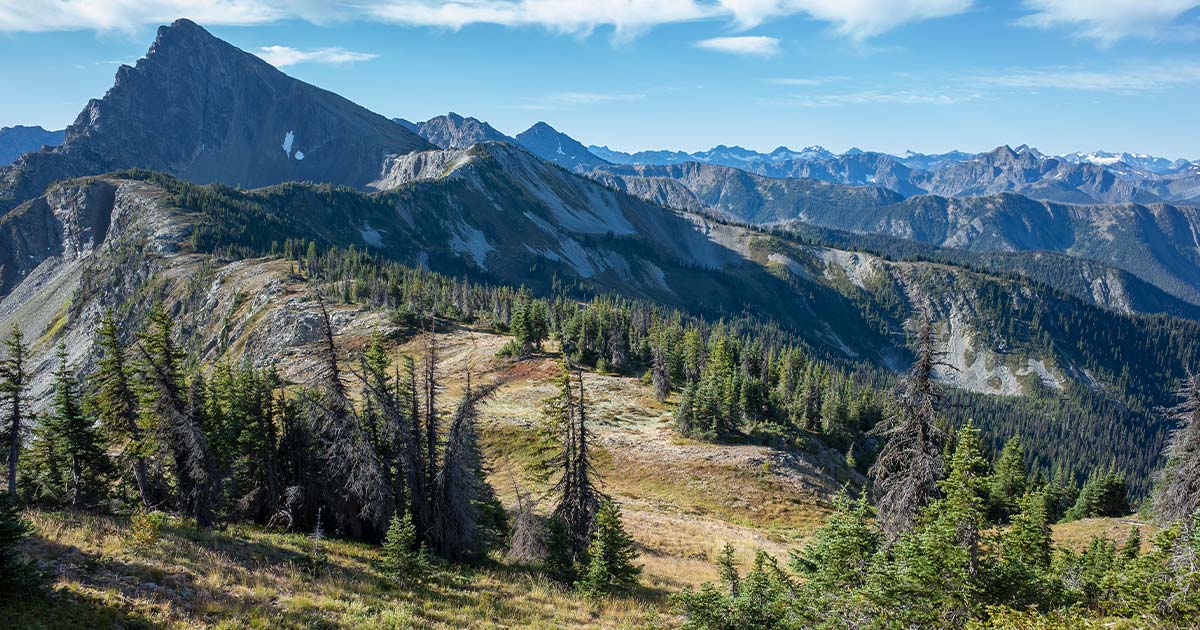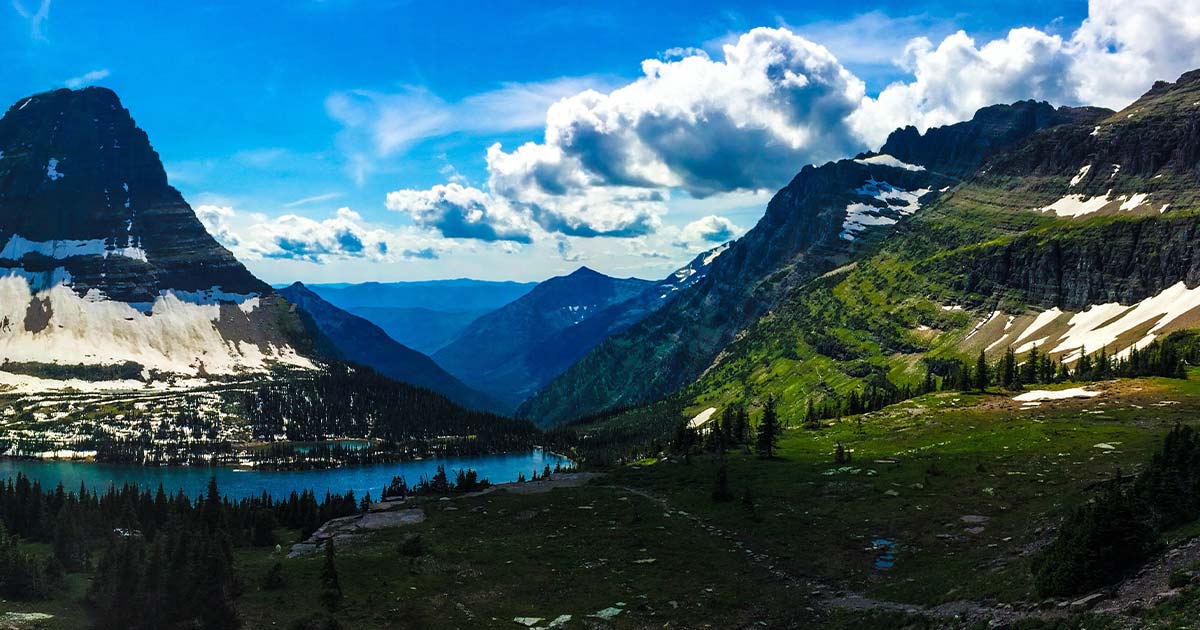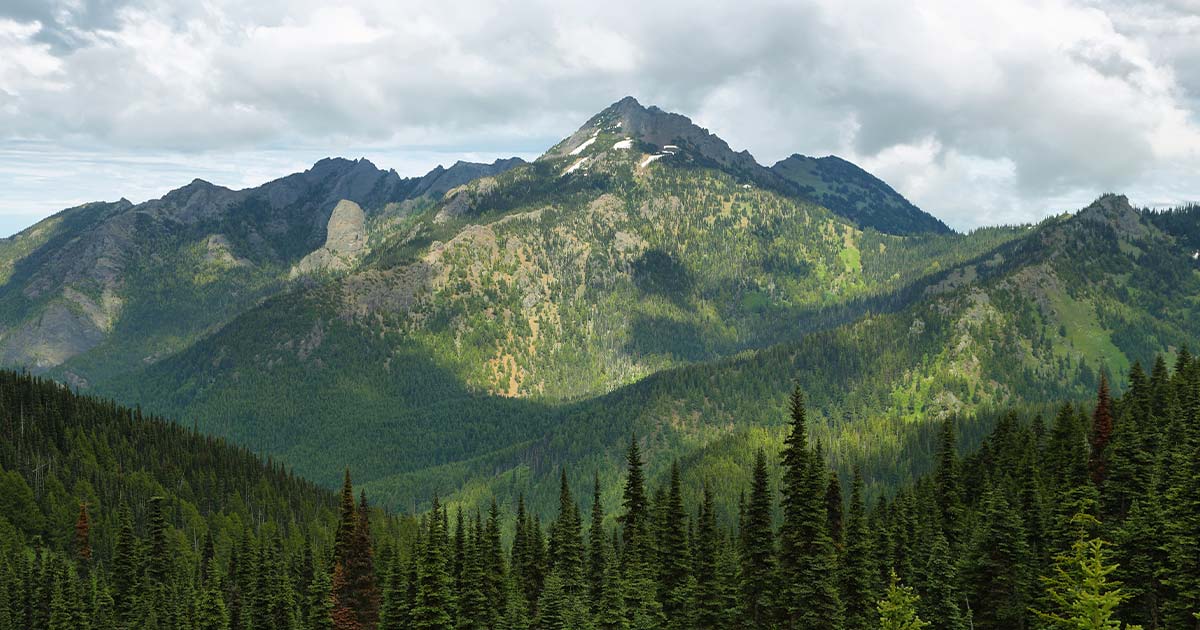
The Pacific Northwest Trail (PNT) is a 1,200-mile, iconic hiking trail that stretches from the Continental Divide in Montana to the Pacific Ocean in Washington. The trail crosses through five unique ecosystems and seven mountain ranges, offering thru-hikers unsurpassed scenic views and incredibly diverse landscapes.
For those who love a challenge of a long-distance, backcountry hike, the PNT is a dream come true. However, the trail’s difficulty level is rated as “very difficult” due to its unpredictable weather, rugged terrain, and remote wilderness areas – so if you’re going to undertake this adventure, you need to be at the top of your game.
This PNT is one of the most challenging and scenic backpacking trails in the United States, offering hikers a unique adventure through the rugged mountainous terrain of the Pacific Northwest.
The history of the PNT is fascinating, dating back to the early 1900s when explorers began exploring the vast wilderness regions of the Pacific Northwest. In 1926, pioneering mountain climber and naturalist Olaus Murie suggested creating a long-distance trail that would connect the wilderness regions of the Pacific Northwest.
However, it was not until the 1970s that the idea gained traction, thanks to the efforts of Ron Strickland, a backpacker, and writer based in Washington. Strickland was fascinated with the idea of a trail that would lead hikers through some of the most beautiful and scenic landscapes of the Pacific Northwest, including Glacier National Park, the North Cascades, and Olympic National Park.
In 1976, Strickland founded the Pacific Northwest Trail Association (PNTA) and dedicated himself to building the trail. By 1983, the first official maps for the PNT were published, and the trail was established as a National Scenic Trail in 2009.
Building the PNT was no small feat. The trail crosses through dense forests, steep mountains, and rugged coastlines. Volunteers and staff had to work through difficult and dangerous terrain to create the trail, using axes, saws, and shovels to clear paths and build bridges over rivers and creeks.
Despite the challenges, the PNT has become one of America’s most popular backpacking trails. Thousands of hikers visit the trail every year, drawn to its stunning scenery, challenging terrain, and the opportunity to explore some of the most remote and beautiful areas of the Pacific Northwest.
In recent years, the PNTA has worked hard to improve the trail, building new campsites, improving trail signs, and creating new maps and guides. The organization also works closely with local landowners and government agencies to ensure the trail remains open and safe for hikers.
Today, the Pacific Northwest Trail stands as a testament to the vision and hard work of Ron Strickland and the many volunteers and supporters who helped build the trail. It continues to inspire adventure seekers and nature enthusiasts who are drawn to the breathtaking beauty and rugged terrain of the Pacific Northwest.

The trail begins in Glacier National Park in Montana, where hikers will get a firsthand view of the stunning views of glaciers, alpine meadows, and pristine lakes. The park is home to diverse wildlife, including grizzly bears, mountain goats, and wolves. The PNT then takes hikers through the rugged Selkirk Mountains of Idaho, where the trail provides astounding views of the Selkirk Crest, the Kootenai River, and the Kootenai National Wildlife Refuge.
Hiking the Pasayten Wilderness in Washington is another bucket-list experience for backpackers. The wilderness area is home to stunning vistas, including the Larch Lakes and Cathedral Lakes. The Pasayten is also a haven for wildlife, including the elusive lynx and the swift gray wolf.
The trail also traverses the North Cascades National Park, where hikers can view high alpine peaks, mountain glaciers, and sub-alpine forests. The park is home to the Ross Lake National Recreation Area, which offers stunning views of the Skagit River and the peaks above.
The Pacific Northwest Trail is more than just a challenging hike. It offers hikers a chance to reconnect with nature, push themselves physically, and discover new parts of the country that few have ever had the opportunity to explore. The trail is both an adventure and a journey of self-discovery, allowing hikers to experience what life is like in some of the most remote and wild parts of the United States.
Hiking the PNT requires planning, preparation, and experience. Hikers should be experienced with long-distance hiking and should have the necessary equipment to survive in remote wilderness areas. The trail is often remote and does not have cell phone coverage or amenities, so hikers should always be prepared for any situation that may arise.
Tips for Hiking the Pacific Northwest Trail

Hiking the Pacific Northwest Trail can be challenging, and it requires careful planning, preparation, and the right equipment. Here are some tips to help you make the most out of your hike:
Plan your route carefully
Before you set off, you need to plan your route carefully. The Pacific Northwest Trail passes through a variety of environments, from high alpine terrain to dense forests, and it can take up to three months to complete the entire trail. Decide how much time you have, and plan your route accordingly. It’s also important to be aware of seasonal changes, particularly snow and trail conditions.
Invest in good gear
Hiking the Pacific Northwest Trail will require good equipment. Invest in a sturdy backpack, comfortable hiking boots, a reliable tent and sleeping bag, a water filter, and proper clothing for all types of weather, including rain.
Be prepared for wildlife encounters
The Pacific Northwest Trail winds through remote backcountry areas and national parks that are home to a range of wildlife, including bears, cougars, and wolves. It is important to carry bear spray and know how to use it. Store your food and cooking gear in bear-resistant containers, hang your food, and avoid cooking or storing food in your tent.
Know how to find water sources
Water sources can be scarce along the Pacific Northwest Trail, particularly during the summer months. Be prepared to carry enough water to last several days, and know how to find water sources along the trail. Bring a water filter or purification tablets to treat water from streams and lakes.
Familiarize yourself with Leave No Trace principles
The Pacific Northwest Trail passes through sensitive ecosystems that are easily damaged by human activity. It is essential that you follow Leave No Trace principles to minimize your impact on the environment. Pack out all trash, bury human waste at least six inches deep, and avoid trampling on vegetation.
Be aware of weather conditions
The Pacific Northwest Trail is subject to unpredictable weather conditions, particularly in higher elevations. Be prepared for rain, snow, and cold temperatures, even in the summer months. Check weather reports before setting out, and be aware of potential hazards such as lightning strikes and flash floods.
Know your limits
Hiking the Pacific Northwest Trail can be physically and mentally challenging. Be aware of your physical abilities, and take regular breaks to rest and refuel. Know how to recognize the signs of dehydration and hypothermia, and seek medical help if necessary.
For those who are prepared to take on the challenge, the Pacific Northwest Trail offers a once-in-a-lifetime experience that is not to be missed.
Hiking Resources:
PNT Hiking Resources
- PNT Official Trail Site: https://www.pnt.org/
- Hiking Trails of the Pacific Northwest: Northern California, Oregon, Washington, Southwestern British Columbia

